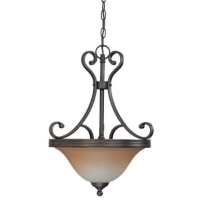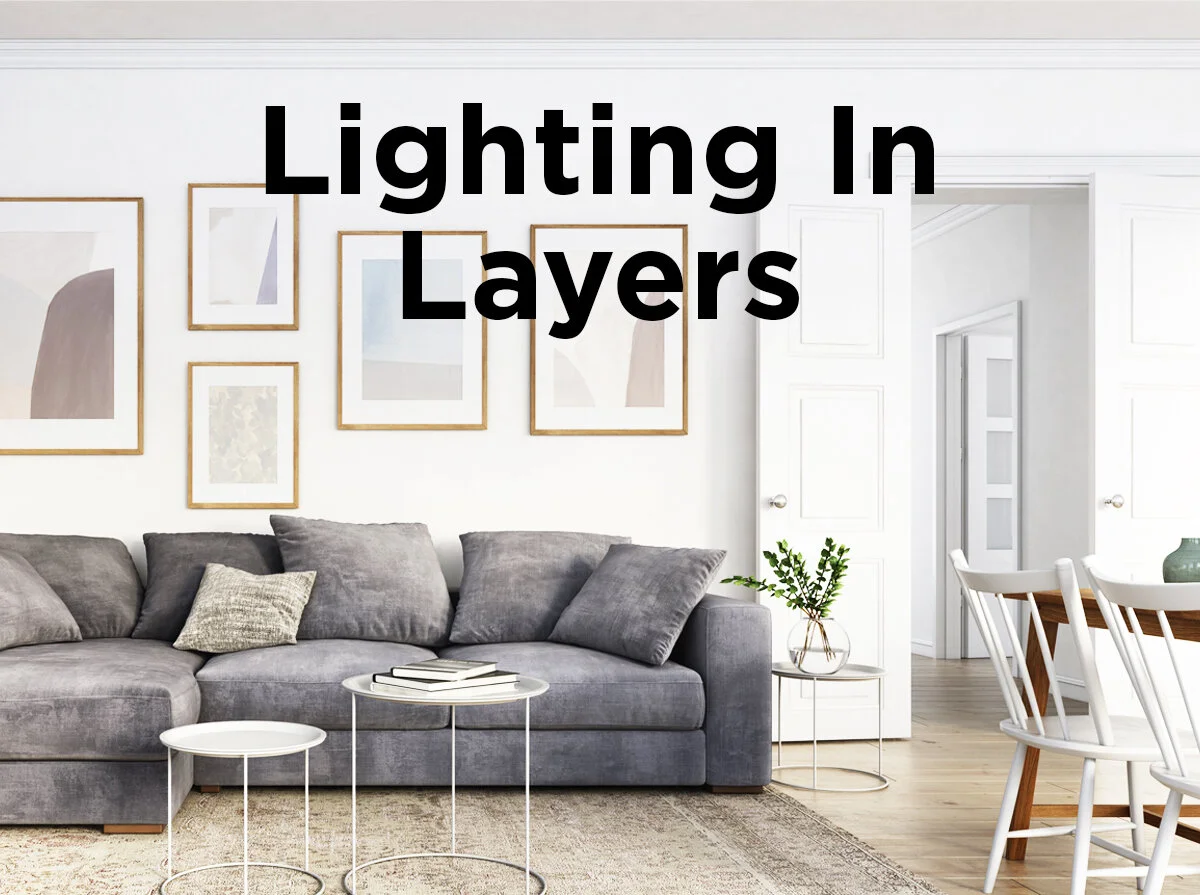In Focus: Pendant Lighting
While track and flush mounted fixtures kept your lighting close to the ceiling in parts 1 and 2 of our series, part 3 adds some length to our fixture with the introduction of pendant lighting. A pendant light is a single light fixture, suspended from the ceiling by a cord, chain or metal rod. Our examination of pendant lighting will cover the characteristics, styles, and requirements for an attractive pendant installation. Pendants are commonly found hung in a series of single light fixtures or a single pendant can have multiple lights. Because of this multi-light arrangement, you may try to classify a pendant as a chandelier. This is not the case:
The difference between a chandelier and a pendant resides two areas, design and function. Chandeliers always have multiple lights and err on the side of a bigger and grander style that dominates the space. Pendants are the smaller, simpler, more directional cousins better designed for task lighting. Although you can use pendant lighting as ambient light, they really shine in areas like the kitchen sink or island, the dining room table, or a line of pendants in the hallway where the purpose is to call attention to and further direct light onto an area. When you want to maintain your general lighting levels but a large imposing chandelier may take away from your décor, a multi-light pendant fixture becomes a minimalist alternative. It gives you the atmosphere you require without being the overwhelming feature of the room. There four main subcategories of pendant fixtures.
Types of Pendants
Down Light Pendants. As the pendant standard and easiest to recognize, this fixture is best suited for task lighting. Coupled with a shade, this pendant’s ability to direct light downward is superb for concentrating illumination on whatever chore is at hand.
Uplight pendant fixture
Up Light Pendant. These fixtures perform the opposite function of down light pendants. They cast light upwards, similar to a chandelier, making them an ideal substitute in the dining room or foyer for general lighting.
Downlight pendant fixture
Multi Light Pendant. A multi light or island pendant has several hanging lights connected to one central fixture. It is a convenient solution for rooms with only one overhead electrical opening. These fixtures tend to be larger and work best above lengthy areas, like the pool table, kitchen counter, or over the dining room table. Many island pendants have a two or three light sources, but some pendants can have 10 lamps or more. The key point is that each lamp is hanging from the central fixture and not tiered or interconnected like a chandelier would be.
Mini pendant fixture
Mini Pendant. Mini pendants are a petite version of the standard pendant fixture. They are usually only used for the task lighting of isolated spaces like your office desk or the kitchen sink. Mini pendant fixtures also have the distinction of being able to create a new focal point, redefining the mood of a room. Highly varied in terms of style, mini pendants can also be used with track fixtures.
Installation Requirements
Regardless of how high or far apart you hang your pendants, you need to remember one thing: headroom. The installation of any dangling bits needs to take in account the stature of people frequenting the area. To avoid a cracked cranium, a pendant light needs to hang an average of 30 to 36 inches above the dining room table. This number increases or decreases depending on how focused you want your lights. Activities like reading or playing pool require more light, so you will need to suspend your pendants a little closer, 24 to 32 inches, to minimize glare yet provide enough glow to perform the task. Pendant fixtures over the kitchen counter may interfere with the culinary process if hung too low, but raising them to an average max height of 40 inches should clear the way. The adjustment to a suitable height should be easy since most pendants come with adaptable chains, cords, or extension rods. Another way of measuring suggests 60 to 66 inches from the floor to the rim of the fixture, seven feet from the floor for a pendant in the foyer or, if your ceiling is more than eight feet high, add three inches for each extra foot of ceiling height.
The “Rule of Three” merely means that because pendants are normally installed in groups, three pendants in a row is an ordinary occurrence. If you are planning to hang your lights in row, like in the hallway or over the kitchen counter, begin with the center pendant first and make sure the space between the bulbs in the fixtures are at least 30 inches apart on either side. Not only does this ensure that you receive a proper spread of light, it also accounts for the diameter of the fixture. When determining the size of pendant, bigger is better. One approach is to keep the diameter of your fixture at least 10 inches smaller than the width of the countertop. However in areas outside of the kitchen, you can add the height and width of the room together to find the appropriate diameter for your pendant. This guideline helps you to create a dynamic visual statement without overpowering the space or diminishing the impact of the fixture.
Pendant Styles
Popular pendant styles include a shade of some kind. Use fabric shades for a more diffuse light in the bedroom or metal shades for an industrial feel in the kitchen. Tiffany-style, frosted, and colored glass shades are also popular. A new trend is the pairing of bare antique reproduction bulbs with pendant fixtures for a modern Victorian mood. With pendant fixtures the sky is the limit, as evidenced by the vast and often highly unique range of shades and finishes. You can complement the décor by choosing a pendant with a finish matching the other finishes in the room or install a fixture that is the center of attention.
Our final installment in this expose on light fixtures will cover the grandest of them all: chandeliers. You can grill us about pendant lengths, expound upon the value of using a stud finder when positioning ceiling lights, or describe your funniest head-banging moments in the comments below. You can find more lighting ideas for your space on our Facebook, Twitter, LinkedIn, or Pinterest. Our stellar staff at 1000Bulbs.com would like to encourage you to give them a call if you require any advisement on achieving a level of lit opulence that the Joneses can be envious of.









